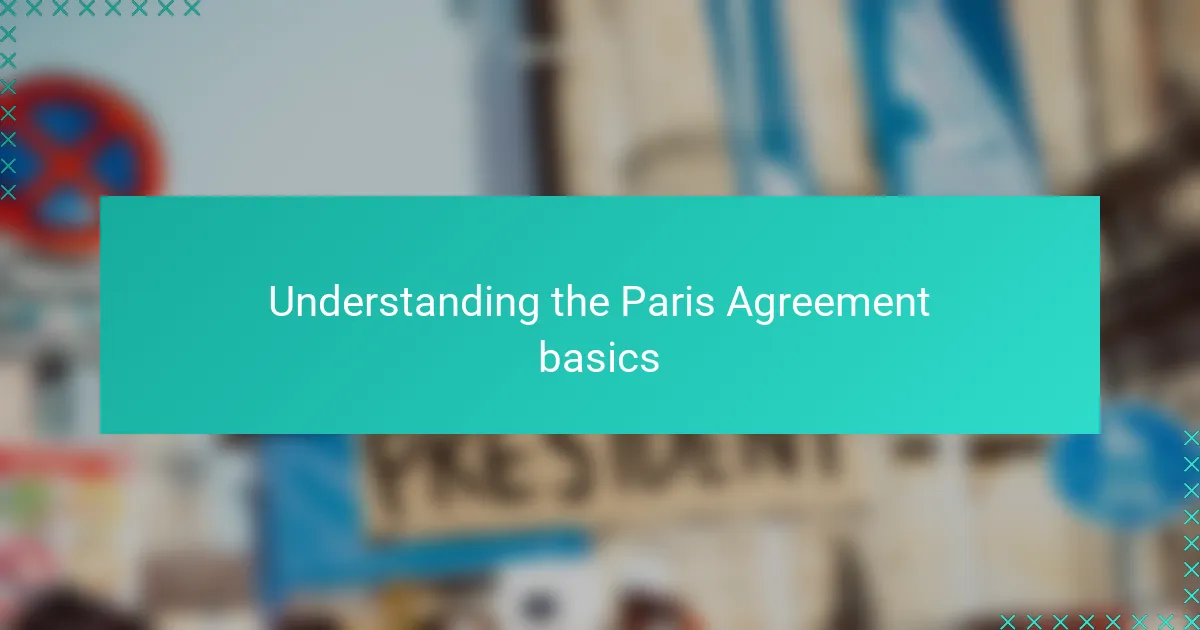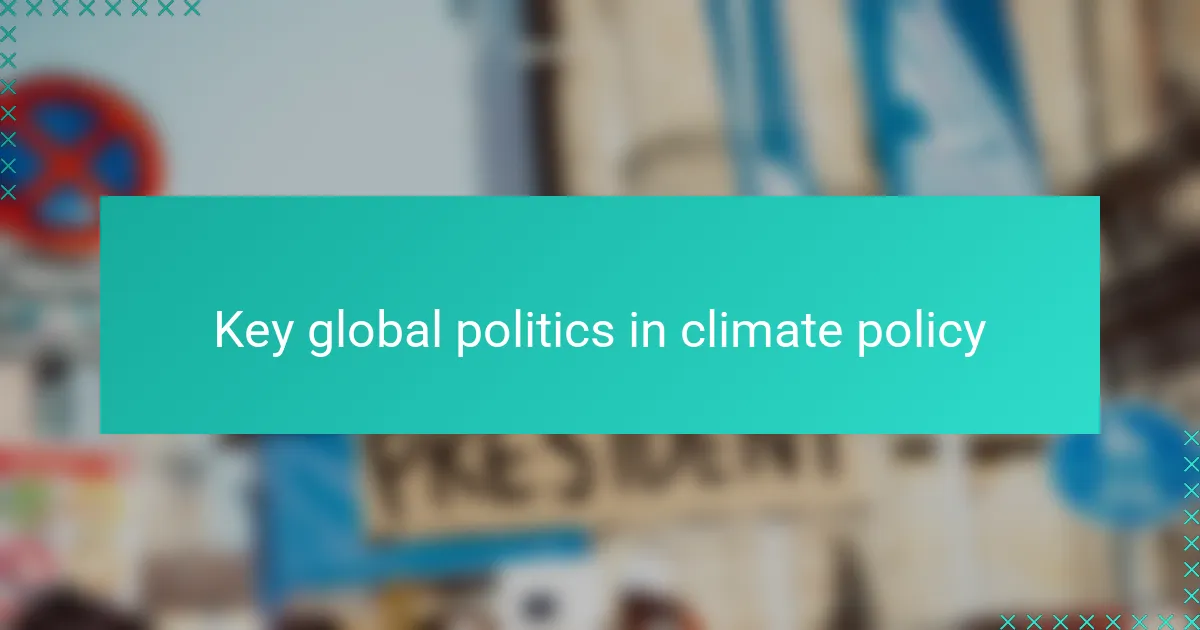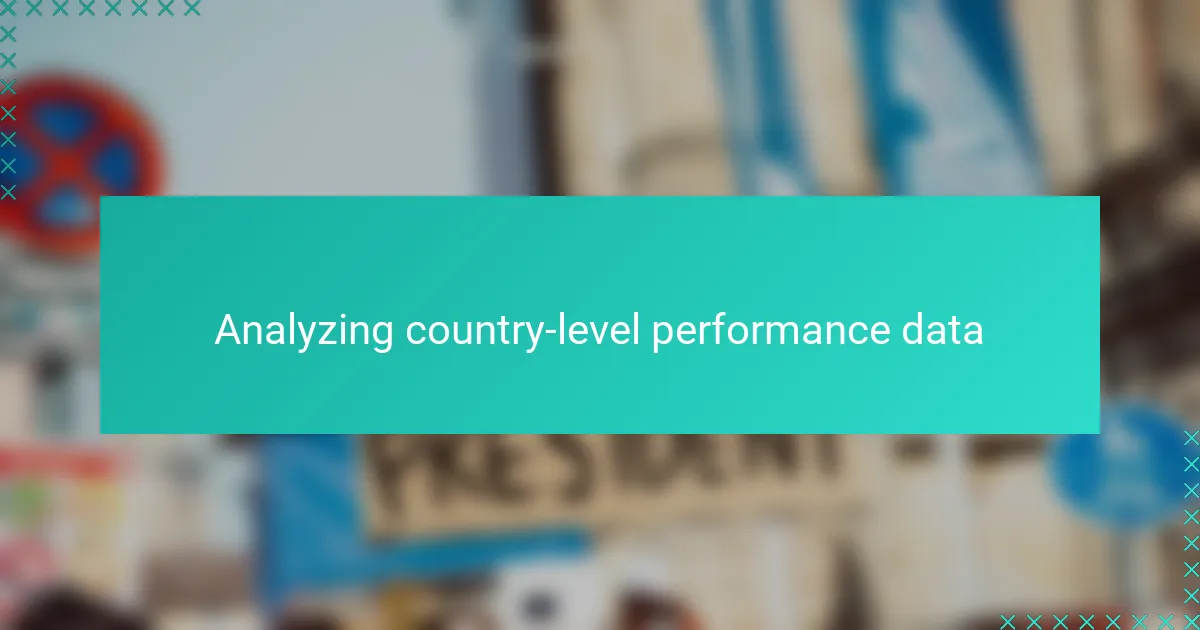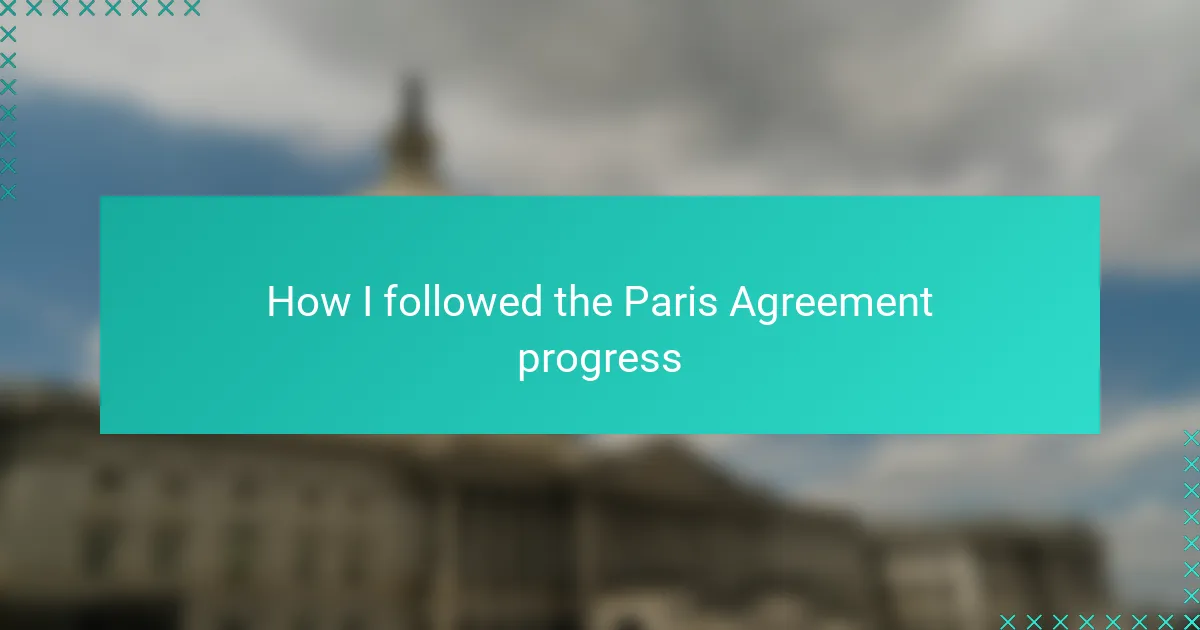Key takeaways
- The Paris Agreement promotes a flexible, bottom-up approach where countries set their own emission reduction targets, fostering individual commitment.
- Global politics significantly influence climate policy, with major powers’ commitments creating momentum for smaller nations while national interests can hinder progress.
- Transparency and accountability are crucial, as regular progress tracking motivates nations to adhere to their climate commitments and encourages public engagement.
- Community-driven monitoring, including independent analyses, enhances the scrutiny of climate actions, reinforcing the importance of collective responsibility in achieving commitments.

Understanding the Paris Agreement basics
The Paris Agreement, to me, represents a global commitment unlike any other. It’s not just a treaty; it’s a shared hope that countries worldwide can unite to limit global warming well below 2°C. But have you ever wondered how such diverse nations agree on something so critical and complex?
I recall when I first dug into the details, feeling both hopeful and overwhelmed. The Agreement hinges on countries setting their own emission reduction targets, known as Nationally Determined Contributions or NDCs. This bottom-up approach felt unique to me—rather than imposing strict rules, it encourages flexibility and encourages each nation to do its part.
What struck me most is the Agreement’s built-in mechanism for transparency and accountability. Every five years, countries must review and ramp up their commitments, which feels like a continuous global conversation rather than a one-time promise. It made me realize that fighting climate change is evolving, requiring persistent effort and trust among nations.

Key global politics in climate policy
Climate policy, in my experience, is as much about diplomacy as it is about science. I’ve often marveled at how global politics shape the way countries negotiate their climate commitments. It’s fascinating—and sometimes frustrating—to see how national interests, economic priorities, and geopolitical rivalries can either propel or stall progress.
What’s really intriguing is how major powers wield their influence. Take the United States or China, for example; their roles often set the tone for global discussions. I’ve noticed that when these players commit to stronger targets, it creates momentum, pushing smaller nations to follow suit. But when disagreements flare, it feels like the whole system teeters on the edge.
Have you ever asked yourself how developing countries fit into this puzzle? From my perspective, they often face a tough balancing act—trying to grow their economies while meeting climate goals. Watching international climate finance negotiations unfold made me realize that equity and support are key political battlegrounds. Without addressing these, real global cooperation can remain just out of reach.
![]()
Tracking international climate commitments
Tracking international climate commitments has been quite a journey for me. I remember scanning through dense UN reports and databases, trying to piece together how each country’s promises were actually turning into action. It struck me that without reliable tracking, these commitments could easily become empty words.
I often ask myself—how transparent are these progress reports really? From what I’ve seen, the Agreement’s transparency framework pushes countries to submit detailed updates regularly, but interpreting these can be tricky. Sometimes the data feels incomplete or overly technical, making me wonder if the broader public even gets a clear picture of who’s pulling their weight.
What keeps me hopeful is how this tracking process sparks accountability in unexpected ways. When nations know their progress—or lack thereof—is monitored on a global stage, it seems to motivate them to do better. It’s like a global scoreboard, reminding us all that climate promises are not just political rhetoric but real commitments we must follow closely.

Tools to monitor Paris Agreement progress
When I first started exploring the tools used to monitor Paris Agreement progress, I was amazed at the range of resources available. Platforms like the UNFCCC’s Transparency Framework and the Climate Action Tracker stood out to me as essential. They offer detailed data on emissions, policy updates, and how well countries are meeting their Nationally Determined Contributions (NDCs).
Have you ever wondered how these complex data sets get simplified into something understandable? From my experience, dashboards and interactive maps do the heavy lifting, turning raw numbers into visual stories that reveal who’s advancing and who’s falling behind. It felt like accessing a real-time pulse on global climate efforts, which made following the Agreement far more engaging.
What I find particularly fascinating is how independent organizations augment official reports with their own analysis. This layered approach introduces healthy scrutiny and often highlights gaps or successes that might be overlooked. It reminds me that monitoring climate progress isn’t just a bureaucratic exercise—it’s a vibrant community effort holding the world accountable.

Analyzing country-level performance data
Diving into country-level performance data, I found myself both intrigued and cautious. How accurate can these numbers really be when reported by the countries themselves? From my perspective, the variations in data quality and transparency reveal a lot about each nation’s political will and capacity to meet their commitments.
I remember grappling with the challenge of comparing disparate metrics—emissions intensity, renewable energy shares, deforestation rates—all telling different parts of the story. It made me appreciate why comprehensive analysis requires not just numbers but context about each country’s development stage and policy environment. Otherwise, what does a simple emission reduction percentage really tell us?
What surprises me most is the subtle progress some overlooked nations make, which only becomes visible when you sift through detailed reports and graphs. Have you noticed how these insights can shift your understanding of global climate dynamics? For me, it’s a reminder that every datapoint connects to human effort and political choices, making the analysis as much about stories as statistics.

Personal methods for following updates
Following updates on the Paris Agreement has become almost a daily habit for me, partly because I like to mix different sources. I usually start my mornings by checking official UNFCCC social media for quick headlines and then delve into detailed reports or analyses later. This blend keeps me both informed and curious without feeling overwhelmed.
Sometimes I wonder how people keep up with such a complex topic. For me, subscribing to newsletters like Climate Action Tracker’s updates was a game-changer—it brings the essentials straight to my inbox, saving me from endless searching. It feels like having a trusted friend summarizing global climate progress in bite-sized pieces.
I also like to engage with online forums and webinars where experts dissect recent developments. Hearing different perspectives firsthand sparks new questions in my mind and deepens my understanding. Have you tried this approach? From experience, it turns passive reading into an active conversation that genuinely enriches how I follow the Agreement’s evolving story.
![]()
Lessons learned from tracking progress
One lesson I’ve learned from tracking the Paris Agreement progress is how patience and persistence matter. Progress often feels slower than I’d hope, yet the incremental updates every five years create a rhythm that keeps the global effort alive. Have you ever felt frustrated waiting for big changes? I certainly have, but witnessing small improvements confirmed my belief that this fight isn’t about quick wins—it’s about steady commitment.
Another insight from following country reports closely is the power of transparency in motivating action. When I saw nations openly sharing their struggles alongside successes, it made me realize that accountability isn’t about shame but about collective responsibility. This transparency framework is like a mirror for the world, reflecting not just data but political will—and that reflection sometimes spurs much-needed course corrections.
Finally, one thing that surprised me is how community-driven monitoring amplifies the Agreement’s goals. Independent analysts and citizen scientists add layers of scrutiny that push official processes to be more rigorous. It made me think: can global climate progress truly succeed without this watchdog spirit? From what I’ve observed, these combined efforts form a network of vigilance that turns promises into measurable actions.
